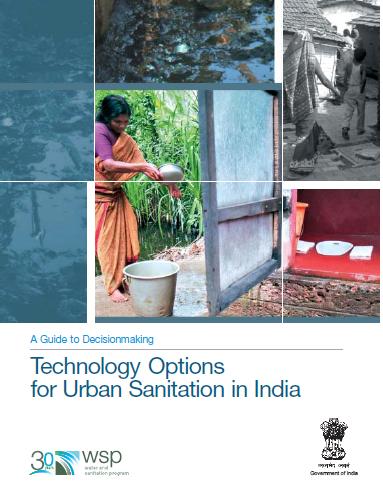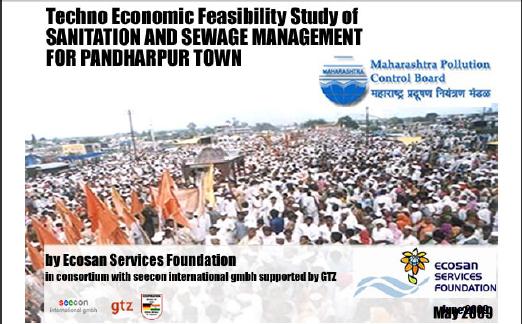/topics/wastewater-reuse-and-recycling
Wastewater Reuse and Recycling
Delhi Water Privatization - WASH News and policy update
Posted on 03 Aug, 2011 06:20 PMContent courtesy: India WASH Forum
Scaling up rural sanitation: Findings from the impact evaluation baseline survey in Madhya Pradesh
Posted on 24 Jun, 2011 03:43 PMThis report is a part of a series of papers that analysed the baseline data from all countries where the program was implemented.
Soil biotechnology installation and water interventions at ACCEPT Society, Bangalore - Videos by Arghyam
Posted on 23 Jun, 2011 12:15 PM
Water interventions in the society
The society is an AIDS care hospice of about 5 acres, on the outskirts of Bangalore.
Decentralised sustainable approach to sewage and waste water treatment for urban India
Posted on 31 May, 2011 03:17 PMthe small ponds, the lakes, the rivers flows into backwaters, the sea, and the wells catching the abundant rain water enabling such vegetation and greenery all around……
Water – also the factor, which brings the biggest of problems to urban life –
- mosquitoes,
- bad stench from clogged dirty canals,
- floods and water logging especially in the monsoons,
- roads breaking up because of poor drainage,
- drinking water scarcity in many parts of the city,
- water borne diseases and health problems
The Goa sewerage system and sanitation services management act - Government of Goa
Posted on 20 May, 2011 04:26 PMThis document describes the Goa Sewerage System and Sanitation Services Management Act and includes:
Recycling of water during distillation in laboratories and industries saves gallons of water - Blog post by Dr K K Sharma
Posted on 11 May, 2011 02:21 PMIn the process of distillation vapors passing through the condenser tube are cooled and condensed by water flowing through condenser tube in the condenser unit of the apparatus. In almost all laboratories the water used for cooling the condenser tube is coming from the water supply tap near the wash basin. The precious water after circulating through the condenser tube is left into the drain as wastewater. It has been observed that about 40 liters of water is required for cooling for making 500 ml of distilled water. The water after cooling is generally left to go into the drain.
The following video has been prepared by me and is released by youtube. The video gives good information for those who want to learn about the traditional method of glass distillation and the modified Recycling Distillation Technique (Sharma, 2004) that saves gallons of water.
Water and wastewater treatment plants - A profile of Dayal Construction Company
Posted on 19 Apr, 2011 05:01 AMThe promoters have a combined industrial experience of more than 50 years in construction, water & wastewater treatment in fertilizer, power, electronics, steel, textile, chemicals, dyestuff & bulk drugs. The company provides total solution for complex water & wastewater problems and has created a niche for itself.
Wastewater reuse in apartment buildings in Bangalore - S Vishwanath
Posted on 14 Apr, 2011 10:12 AMEven if an apartment uses as less as 5000 litres of water a day it must have a wastewater recycling system which does such a thorough job that the treated wastewater is reused to replace fresh water and not for simply disposing off into the environment in a safe way. It is simply not good enough for treated wastewater to be used for watering lawns, an unnecessary demand.
Technology options for urban sanitation in India - A guide to decision making by WSP and MoUD (2008)
Posted on 11 Apr, 2011 12:20 AM This guide by the Water and Sanitation Program and the Ministry of Urban Development, is meant to enable municipalities and urban local bodies make informed decisions on sanitation technologies.
This guide by the Water and Sanitation Program and the Ministry of Urban Development, is meant to enable municipalities and urban local bodies make informed decisions on sanitation technologies.
Poor sanitation facilities and the lack of sanitation facilities are a health hazard and exact a human toll on human health. Realising the magnitude of the problem and the resulting fallout, the Government of India has been increasing the funding for sanitation infrastructure via the Jawaharlal Nehru National Urban Renewal Mission (JNNURM). However, money alone cannot solve the problem. Urban local bodies and municipalities need sound advice on technological options, planning and implementation to ensure that the money is well spent and the sanitation projects cater to the need of the target audience.
Techno-economic feasibility study of sanitation and sewage management for Pandharpur town, Maharashtra - Ecosan Services Foundation (2009)
Posted on 10 Apr, 2011 02:15 AM This study provides interventions to solving the sanitation crisis in the holy town of Pandharpur, situated on the banks of the Chandrabagha/Bhima river, in the state of Maharashtra, which receives more than 1.5 crore devotees annually. On any given day there are approximately 20,000 pilgrims in this Class B town. This vast floating population creates massive sanitation problems leading to environmental and hygiene issues. The study forms part of the Maharashtra State Pollution Control Board's 'Environmental Improvement Programme at Religious Places in Maharashtra' project.
This study provides interventions to solving the sanitation crisis in the holy town of Pandharpur, situated on the banks of the Chandrabagha/Bhima river, in the state of Maharashtra, which receives more than 1.5 crore devotees annually. On any given day there are approximately 20,000 pilgrims in this Class B town. This vast floating population creates massive sanitation problems leading to environmental and hygiene issues. The study forms part of the Maharashtra State Pollution Control Board's 'Environmental Improvement Programme at Religious Places in Maharashtra' project.





